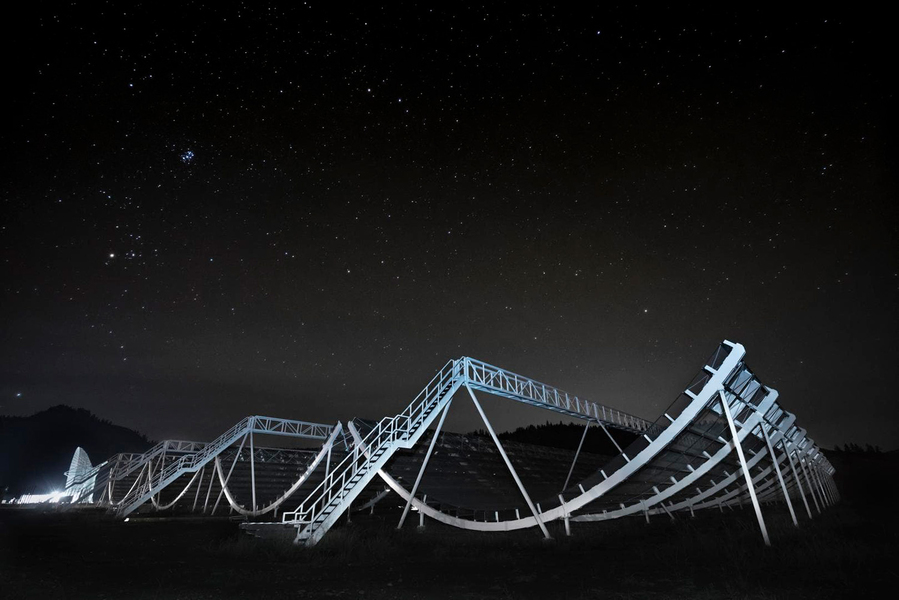This post has been modified from the original post, published by MIT News
To catch sight of a fast radio burst is to be extremely lucky in where and when you point your radio dish. Fast radio bursts, or FRBs, are oddly bright flashes of light, registering in the radio band of the electromagnetic spectrum, that blaze for a few milliseconds before vanishing without a trace.
These brief and mysterious beacons have been spotted in various and distant parts of the universe, as well as in our own galaxy. Their origins are unknown, and their appearance is unpredictable. Since the first was discovered in 2007, radio astronomers have only caught sight of around 140 bursts in their scopes.
Now, a large stationary radio telescope in British Columbia has nearly quadrupled the number of fast radio bursts discovered to date. The telescope, known as CHIME, for the Canadian Hydrogen Intensity Mapping Experiment, has detected 535 new fast radio bursts during its first year of operation, between 2018 and 2019.

Scientists with the CHIME Collaboration, including researchers at the University of Wisconsin–Madison, have assembled the new signals in the telescope’s first FRB catalog, which they will present this week at the American Astronomical Society Meeting.
UW–Madison physics professor Moritz Münchmeyer is a member of CHIME-FRB and contributed to the statistical analysis of the new FRB catalog. He joined UW–Madison this spring and a part of his new group is continuing this work, with the goal of using FRBs as a novel probe of the physics of the universe.
“This is only the beginning of FRB research. For the first time we now have enough FRBs to study their statistical distribution. It turns out that FRBs come from all over the universe, from relatively nearby to half way back to the Big Bang,” Münchmeyer says. “They are also quite frequent, about 800 per day if we were to see them all. They are extremely powerful light sources at cosmological distances and thus provide a new window into the physics of the universe.”
For the full story, please visit https://news.mit.edu/2021/chime-telescope-fast-radio-bursts-0609
